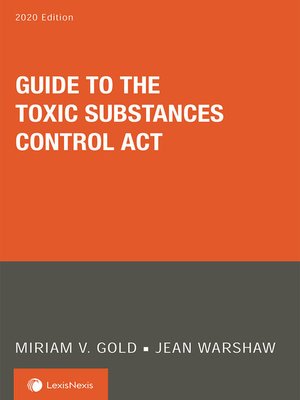
Sign up to save your library
With an OverDrive account, you can save your favorite libraries for at-a-glance information about availability. Find out more about OverDrive accounts.
Find this title in Libby, the library reading app by OverDrive.



Search for a digital library with this title
Title found at these libraries:
| Library Name | Distance |
|---|---|
| Loading... |
The Toxic Substances Control Act (TSCA) is the primary vehicle for enabling the government to review most chemicals, other than foods, drugs, cosmetics and pesticides, before they are introduced into commerce. TSCA was overhauled in 2016 when the Frank R. Lautenberg Chemical Safety for the 21st Century Act (Lautenberg Act) was signed into law, changing the basic approach of the law including the premanufacture notification procedure, treatment of confidential business information, preemption of state laws, and the safety standard by which chemicals are evaluated. The United States Environmental Protection Agency has been steadily issuing new rules and guidances to meet its obligations under the Lautenberg Act.
Guide to the Toxic Substances Control Act (formerly known as "The Toxic Substances Control Act: Reformed by the Lautenberg Act") is written for lawyers and regulatory affairs specialists who need to understand the details of the law and implement both old and new regulations and guidances. The 2020 edition includes detailed descriptions and practice pointers for each of the programs under TSCA and TSCA reform. The past few years have brought major developments in confidential business information, user fees, mercury reporting, reporting prospective use or processing of inactive substances, alternatives to animal testing, and Department of Justice limits on the use of guidances. In addition, EPA has issued numerous regulations implementing the reforms brought by the 2016 overhaul, and more recently stakeholders have instituted legal challenges to the EPA's actions. The areas of most concern are confidential business information and risk evaluation protocols. All of these and more are described in detail so that practitioners can navigate the new regulations and understand the areas of uncertainty. There is also in-depth coverage of state chemical regulation laws, and practical resources including model procedures for incorporating TSCA requirements into daily operations.







